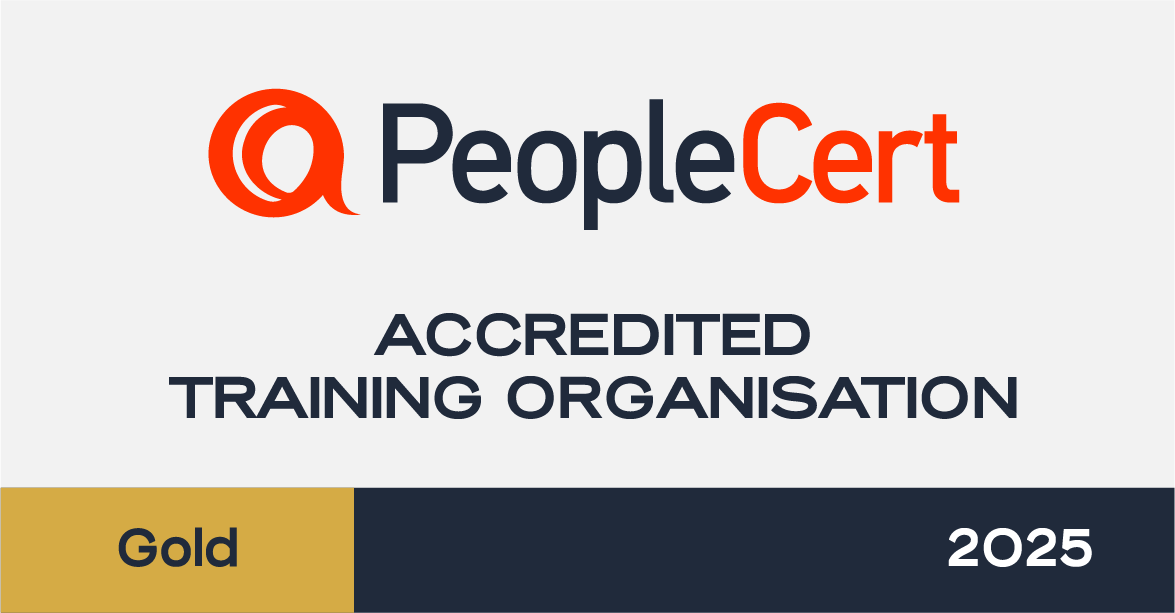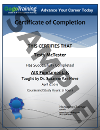Module 00: Course Introduction: ITIL® 4 Foundation
- The Nature of the Class
- Agenda
- AXELOS ITIL 4 Schema
- Available Resources
Module 01: Exam Tips
- Understanding the Exam Process
- Exam Questions and Grading
- Taking the Exam
- Using the Practice Exams
Module 02: High-Level Service Management & Key Elements of ITIL 4
- Where are Services and Service Management Today?
- Introduction to the Key Elements of ITIL 4:
- Service Value System (SVS)
- Four Dimensions Model
Module 03: ITIL 4 Key Concepts
- 15 Terms
- Practical Application
- Axel Car Hire
Module 04: Service - Definition & Keys Features
- What is a Service?
- Service Provision
- Service Offering
- Service Relationship Management
- Organizational Service Management
Module 05: Service Offerings & Relationship
- Goods
- Provisioning
- Consumption
Module 06: Putting it All Together
- Example
Module 07: The Service Relationship Model
Module 08: Axel Car Hire Example
- Value
- Value Co-Creation
- Utility
- Warranty
- Cost
- Outcome
- Output
- Risk
Module 09: Critically of Value
- Utility
- Warranty
Module 10: The Dimensions of Service Management
- Overview of the Four Dimensions
- Organizations & People
- Information & Technology
- Partners & Suppliers
- Value Streams & Processes
- Organization & People
- Culture
Module 11: Key Features of Information & Technology
- The Changing Role of Technology
- The Value of Technology
- The Importance of Data
Module 12: Partners & Suppliers
- Making it All Work
- Partners & Suppliers
- Contracts and Agreements
Module 13: Value Streams and Processes
- The Service Value System
- The Service Value Chain
- Value Streams
- Processes
Module 14: Introduction to ITIL’s Service Value System (SVS)
The Objectives
The Purpose
Overview
Module 15: Service Value System Components
- Governance
- Practices
- Service Value Chain
- The Impact of a Poor SVS
Module 16: Overview of ITIL’s Service Value Chain (SVS)
- Value Chain Activities
- What’s included, What’s not
- Triggers
- Service value Streams
- Key Exam Tip
Module 17: Service Value Chain – Plan
- The Purpose
- What’s Included
Module 18: Service Value Chain – Improve
- The Purpose
- What’s Included
Module 19: Service Value Chain – Engage
- The Purpose
- What’s Included
Module 20: Service Value Chain – Design & Transition
Module 21: Service Value Chain – Obtain/Build & Deliver & Support
- The Purpose
- What’s Included
Module 22: ITIL’s 7 Guiding Principles
- What They Do
- How They Help
- What They Are
- Exam Tip
- Focus on Value
Module 23: Start Where You Are
- Definition
- How it Works
Module 24: Progress Iteratively with Feedback
- Definition
- Application
- Collaborate & Promote Visibility
- Definition
- Application
- Agile, Lean & DevOps
Module 25: Think and Work Holistically
- Definition
- Implications
- Keep it Simple and Practical
- Why Simple is Important
- Practical Solutions
Module 26: Optimize & Automate
- Technology VS. Human Oversight
- Benefits of Automation
Module 27: Introduction to Key ITIL Practices
- Introduce the Concept of a “Practice”
- Introduce the Three Groups of ITIL Practices
- General Management
- Service Management
- Technical Management
Module 28: General Management Practices
- Purpose Statements
- Information Security Management
- Relationship Management
- Supplier Management
Module 29: Continual Improvement
- The Purpose
- The Scope
- Key Activities
- Methods and Models
- Approaches – Lean, Agile, DevOps
Module 30: The Continual Improvement Model
- What Does it Say?
- How it Works
Module 31: Continual Improvement & Guiding Principles
- The Details
- Collaborate & Promote Visibility
Module 32: Service Management Practices (SMP)
- Discuss the Purpose of:
- IT Asset Management
- Monitoring and Event Management
- Release Management
- Service Configuration Management
Module 33: Service Management Practices - Change Enablement
- The Definition
- The Importance of Change Enablement
- Emergency Change
Module 34: Service Management Practices - Incident Management
- The Definition
- The Purpose
- The Process
Module 35: Service Management Practices - Problem Management
- The Purpose
- The Definition
- Phases
Module 36: Service Management Practices - Service Requests Management
- The Definition
- The Purpose
- Types of Requests
- Guidelines
Module 37: Service Management Practices - The Service Desk
- The Purpose
- The Function
- Practical Application
Module 38: Service Level Management (SLM)
- The Purpose
- The Definition
- Skills and Competencies
Module 39: Information Analysis for Service Level Management
- The Process
- Information Sources
Module 40: Technical Management Practices
- Discuss the Purpose of:
- Deployment Management
- Review the Discussed ITIL Practices
Module 41: Conclusion
- Review Exam Content
- Final Thoughts on Taking the Exam
There are no prerequisites to take the ITIL 4 Foundation Course.
View all course details


